This presentation was originally given on January 23, 2015, in front of an audience of about 140 attendees at Outdoor Retailer, as part of the Outdoor Retailer Education Sessions. The presentation format and flow have been modified slightly to better fit an online presentation vs. the presentation slide + speaking format at Outdoor Retailer. The slides from the presentation are available at the bottom of this post.
What makes adventure brands different?
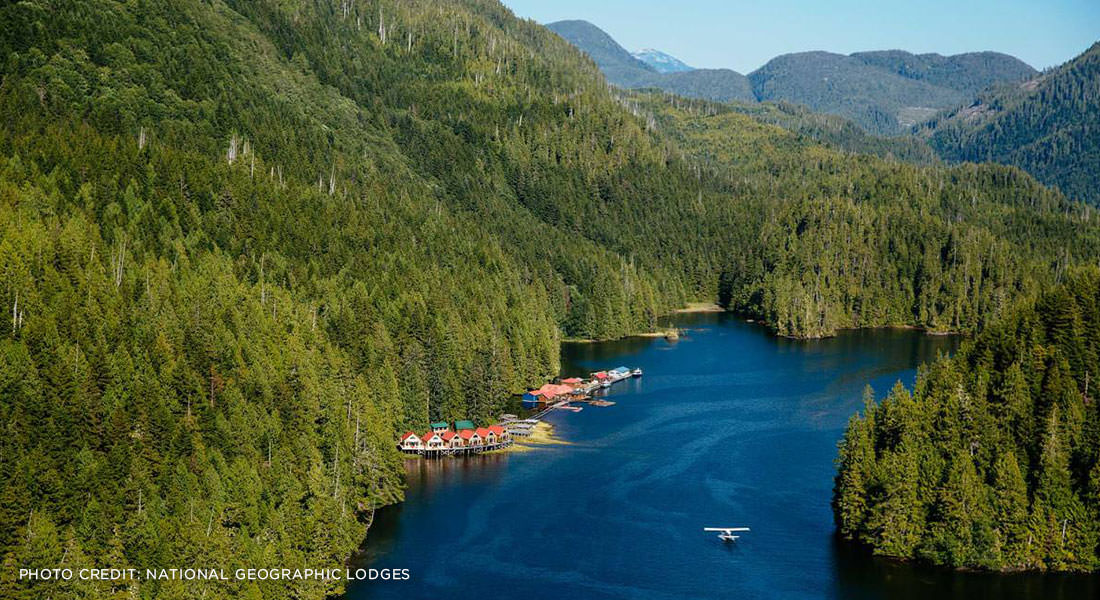
The travel and tourism industry sells experiences (not products).
In the travel and tourism industry, adventure brands are the destinations, hotels, and attractions that are selling experiences. It’s the difference between National Geographic Lodges highlighting the experiences you’ll have at Nimmio Bay Lodge in British Columbia, and Orbitz giving you a list of hotels. In the hotel industry, of course the property plays a role in choosing where to stay, but the ability to communicate experiences over amenities is what elevates a property to an adventure brand (or some might call it an “experience” brand). For destination marketing organizations (DMOs) and Visitors and Convention Bureaus (CVBs), the adventure brands are those that are highlighting editorially-curated itineraries and stories over long lists of uncontextualized restaurants and attractions.
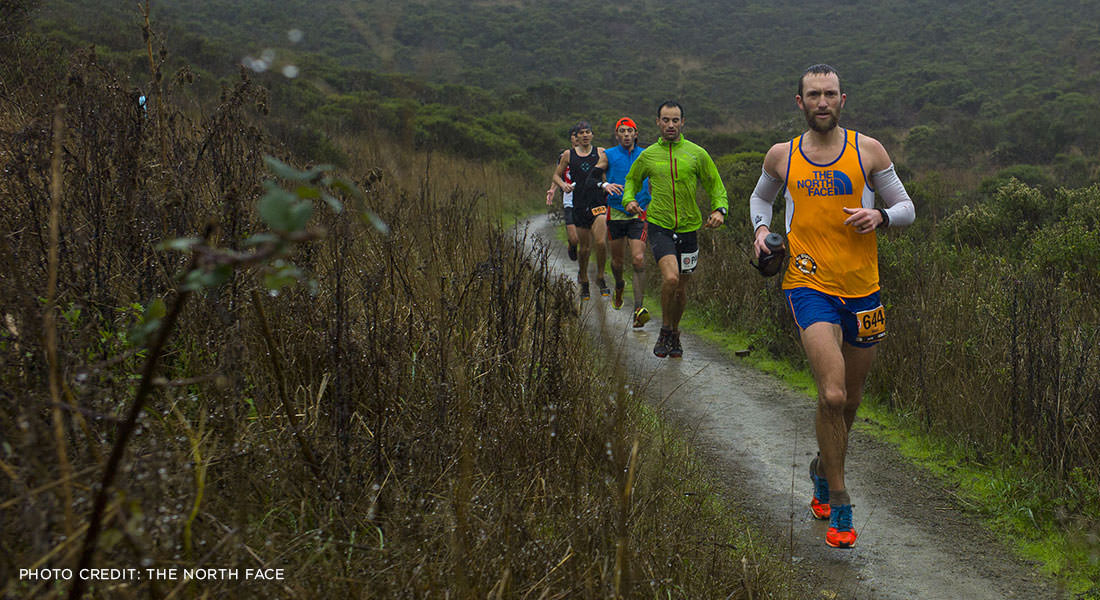
Adventure brands in the outdoor industry sell products through experiences.
Adventure brands in the outdoor industry are aspirational brands. While we, as individuals, may not go on all of the extreme adventures that they present, we share in the emotion of overcoming challenges. Through these stories, brands create a point of view that like-minded consumers can associate with and share. Brand affinity is created when the people who purchase and wear the brand feel like part of a likeminded tribe.
So in what ways should adventure brands think about how this relates to content strategy?
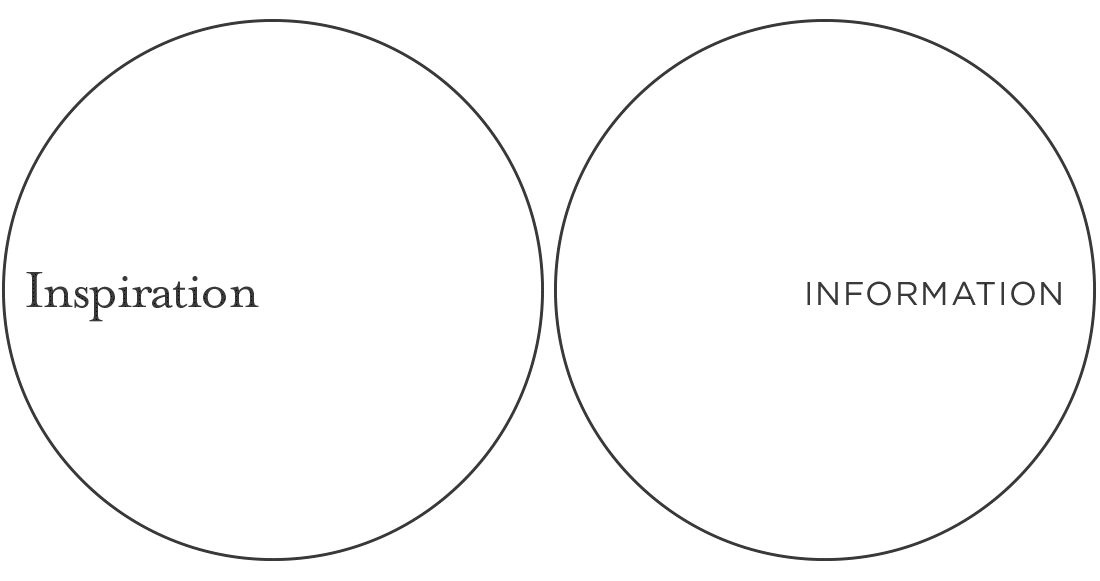
Inspiration+Information
Inspiration and Information are the two parts, that when combined, represent the best of what adventure brands stand for. The inspiration gives the reason why you should care and why this is different. Information provides the call to action on how to buy, where to stay, how to get here, etc. Inspiration without information can inspire people, but doesn’t reward the relationship with a clear path on how to go on this adventure or purchase the products used in the experience. Information without inspiration gives the product features, benefits, and specs, but not the emotional reason why you would love this product/hotel/attraction/destination/etc. That sweet spot where they overlap provides both the emotional and the analytical, the dream and how to make the dream a reality.

Content & Context
Creating content isn’t easy. It requires dedication, thought, creativity, and consistency. Content creation is one of the most time consuming aspects of any interactive project. Determining what kind of content to create requires having a point of view: what is your unique perspective, tone of voice, and storytelling opportunity? But creating content is just one part of the equation; the second is creating context around this content. What stories share similar themes? How can content be presented to explain the reason “why” it exists in relation to the brand? In travel, creating something like an itinerary creates context around grouping a number of potentially unrelated items – the five breweries, two restaurants, hotel, and nearby attraction are all grouped together in the context of a great way to spend a couple days in Bend, Oregon. Sometimes individual pieces of content can span context – in our example, Mt. Bachelor could be part of a story about a multi-day brewery tour in Bend as well as part of a story on Oregon’s best skiing.

Interaction is Brand
The interactions people have with your website are a direct reflection of your company’s brand. A good user experience and design results in a positive brand experience. Navigation that’s hard to use, search results that aren’t appropriate, and broken links all result in people thinking poorly of a brand. This goes for responsive design as well – the brand experience carries across all screen sizes and devices, both design and functionality. Navigation that works by hovering over it with your mouse on a desktop doesn’t work the same on a touch device.
Inspiration+Information. Content & Context. Interaction is Brand. These factor into some examples of what some adventure brands are doing online from a content strategy perspective…
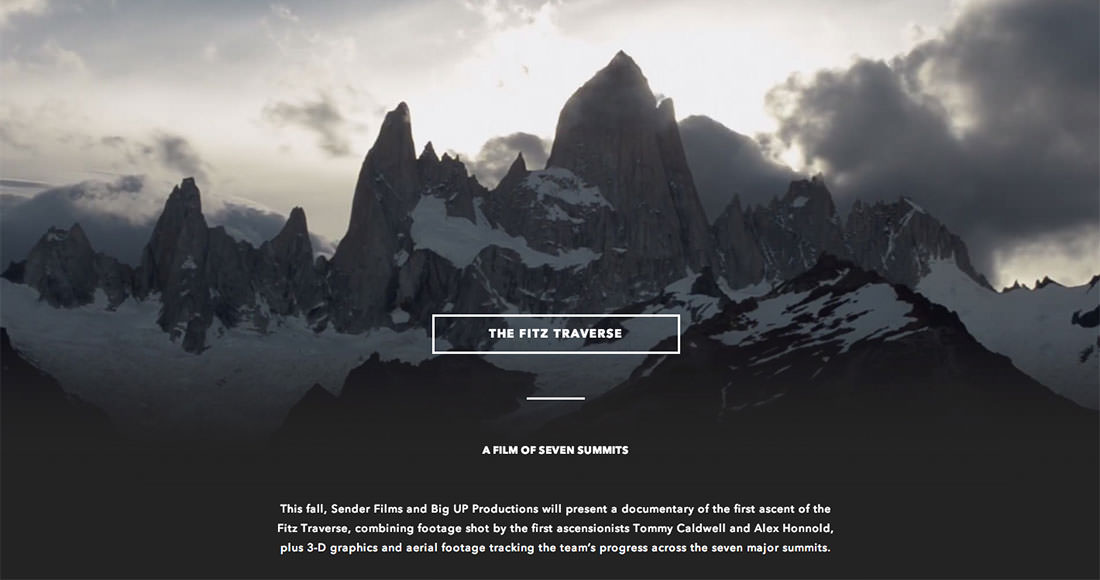
Patagonia – The Fitz Traverse
Patagonia is a great outdoor brand – they have a strong sustainability message and are one of the original innovators in the industry. And they have some great content on their site, like this story about the Fitz Traverse (shown above). Following the journey of Tommy Caldwell and Alex Honnold, it has rich media (though I couldn’t get the video to play on the Fitz Traverse page), and some cool background video elements and animations.
One of the best things on this page is down near the bottom: the list of equipment used by Tommy Caldwell on this series of climbs. When we’re thinking about Inspiration+Information, this is the call-to-action from the story: purchase the products that are great enough to make it through this adventure.
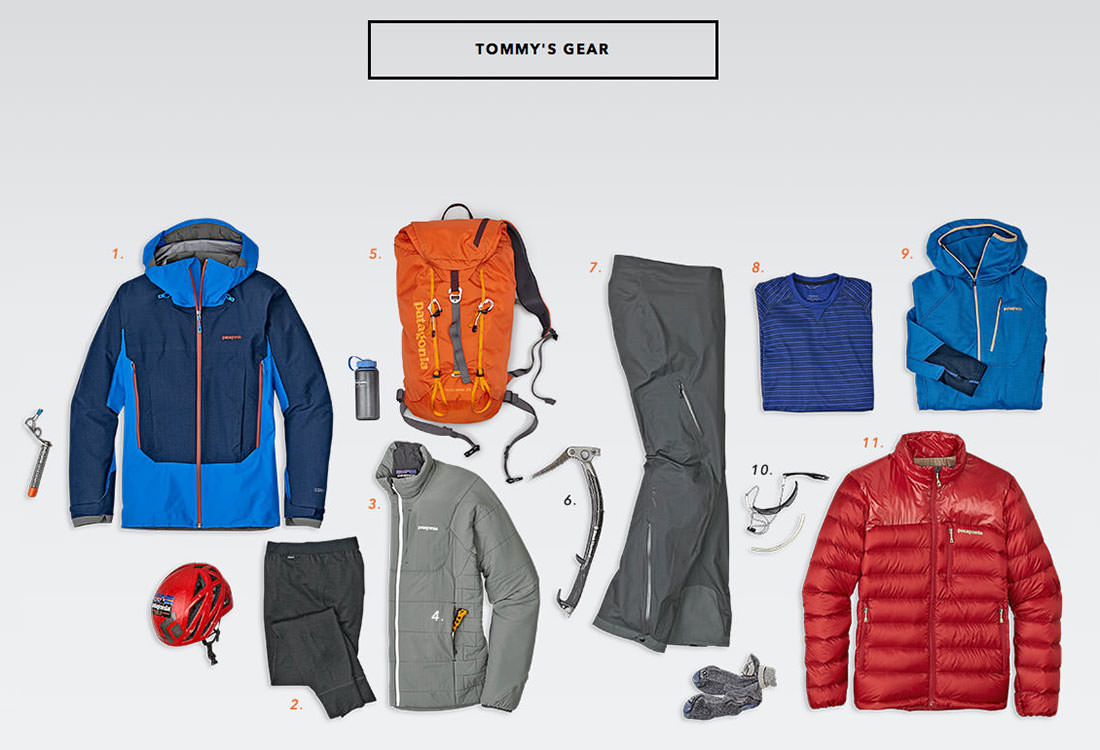
For example, on the Fitz Traverse page, the backpack links to the Ascensionist Pack 35L page. While that page has lots of products specifications, features, benefits, a video, the sustainability story, related and similar products, and customer reviews, there isn’t a link back to the Fitz Traverse story. There’s a lot of technical information on the Ascensionist pack page, but what really makes this pack different from any number of packs you can buy from any number of other outdoor brands? Unless you’re a Patagonia devotee, there’s no clear reason why you should care about this bag over another. Where’s the emotional attachment? The Fitz Traverse story can provide that reason why you should buy the bag by creating the emotional connection between the story, the adventure, and the gear.
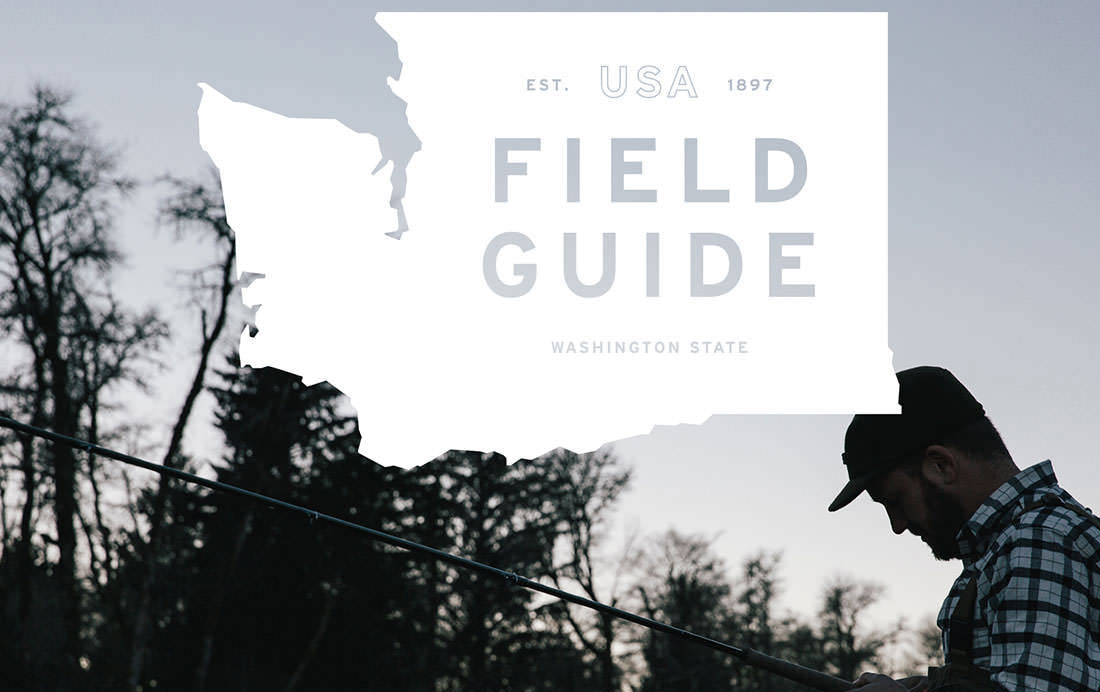
Filson – Field Guide
Filson is a heritage brand located in Seattle, Washington. Having been around for over 100 years, they know a thing or two about making things that last. And that’s a big part of their brand story – they go so far as to use “Unfailing Goods” as their tagline.
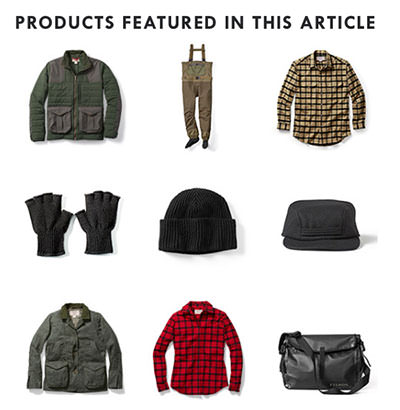
Their blog content is chock full of interesting outdoorsman stories, like this Winter Steelheading on the Olympic Peninsula post. Filson has built credibility by producing durable products over the last century, used by hunters, fishermen/women, and those who work outside (think “on the range”). Filson shares the point of view of these people, which also gives them credibility to produce stories about fishing for steelhead, duck hunting, and exploring places like Glacier National Park. These aren’t stories that all outdoor brands can produce, either because they don’t have the credibility in the hunting/fishing community, or they don’t share Filson’s point of view on these activities. Imagine a brand like Poler writing a story about hunting for Himalayan Snowcock in Nevada. It just wouldn’t make sense for Poler from a brand standpoint, in the same way that Filson wouldn’t have a blog post about skateboarding.
Similar to the Patagonia example, Filson highlights some of the products featured in their steelhead blog post, each of which links to the product page, like the Alaskan Guide Shirt. And similar to Patagonia, the Filson product page has product specifications, fit description, different colorways, related products, and customer reviews. The miss here is linking from the product page to the great inspiration content about wearing the shirt while steelhead fishing. This type of crosslinking would strengthen the perspective of Filson’s customers: I purchase Filson products because I share their point of view. It’s creating a tribe of like-minded people that Filson customers want to be associated with and want to represent. When someone is wearing a Filson product, it’s not just a durable, hardworking piece of clothing, it’s a badge of membership in the Filson club. Imagine how this powerful relationship could help convert prospective customers into purchasers if it was on the product page. We can’t assume that just because the content lives on the blog that everyone will see it – it should be in front of potential customers in the multiple places they’ll engage with the brand online.
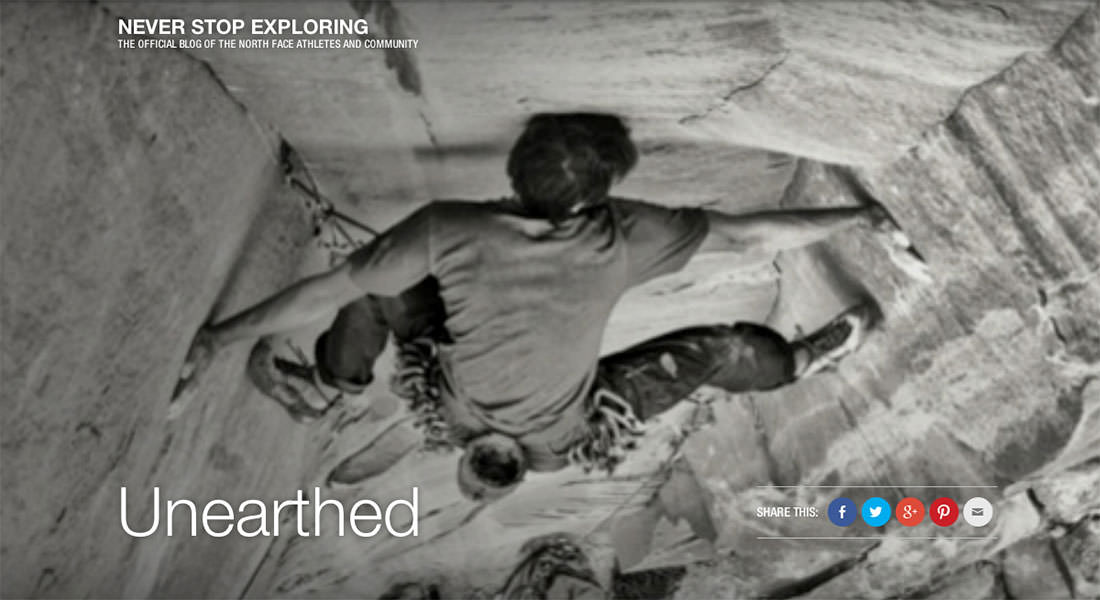
The North Face – Never Stop Exploring
The North Face is one of the most well known adventure brands out there. But instead of sitting back and just focusing on product information, they’ve invested in creating a storytelling platform, NeverStopExploring.com, that matches their content strategy – long format multi-post Expeditions, short format single-post stories, and athlete profiles with links to their social media profiles. Specifically, the Expeditions section allows The North Face to tell serialized stories over the course of days or weeks. The individual stories are posted as dispatches, and collected under an umbrella Expedition in an overarching narrative.
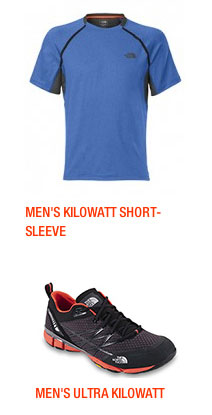
Much like Patagonia and Filson, The North Face features products used in stories, and links these to the product pages on TheNorthFace.com. This creates that link from inspiration to information. But when checking out the Ultra Kilowatt shoe, there is plenty of information about the features, benefits, and specs of the shoe, related and similar items, and product reviews, but no links back to the inspiration content. Knowing how The North Face athletes are using these products would be not only a great way to educate consumers on what the products can be used for in real life, but also create a relationship between the consumers and The North Face athletes as brand ambassadors. I follow several of their athletes like Jimmy Chin and Renan Ozturk on Instagram, and feel a personal connection to them (well, as much of a relationship that social media allows) from the photos they post and the adventures they go on. This in turn builds my affinity for The North Face as a brand that supports these athletes and storytellers in their expeditions. (Side note: I had the opportunity to meet Renan at a National Geographic Adventure event at Outdoor Retailer, and it was was pretty cool to meet one of the people I’ve been following from afar and then get to interact with face-to-face.)
So what can we learn from these examples?
Have a Point of View
Point of view is crucial when thinking about content strategy. Your brand’s point of view will help guide what content is appropriate and what stories aren’t a good fit. Filson’s point of view allows them to tell authentic hunting and fishing stories, something most of their competitors can’t match. Having a defining point of view means not everyone is going to agree with them, but those that do really agree with them. And it’s this shared point of view between the brand and the consumer that helps support the premium price point that Filson charges for their products (beyond their lifetime warranty, quality, etc.).
The North Face’s point of view highlights amazing multi-day/week expeditions. While many of us will never replicate these trips, we understand that if the products perform in those conditions they should be more than adequate for our own needs. Patagonia’s point of view integrates their sustainability and heritage into their storytelling. Each of these brands focuses on content that supports their point of view – no surfing stories for Filson, no hunting stories from The North Face or Patagonia.
Opportunities in e-Commerce
As shown in the three examples above, there’s a huge opportunity in integrating inspiration content into information pages. I don’t know the e-commerce systems being used by Patagonia, Filson, or The North Face. They may be limiting in what kind of content you can put on those pages. But the opportunity to build an emotional connection between a prospective consumer and a brand is being lost at these critical touchpoints – when brands are trying to convince someone to buy their product over a competitor’s similar product. While it is obviously important to think about sales funnels and getting consumers down the purchasing path, it’s just as important to create reasons for them to enter the funnel in the first place.
- Do I know what this brand stands for?
- Why should I care about this brand and this product?
- Do I want to be associated with the “tribe” of people who purchase this brand?
- What kinds of things are people using this product for, and are they similar to how I’m planning on using it (or do they create an aspirational association for what could be possible)?
- Is there value in purchasing this product from this brand over a comparable product from a comparable brand?
All of this isn’t to say that product specs, features, and benefits shouldn’t be presented on a product page. Of course this information should be on the page. And it should go without saying that no amount of inspirational content will make a bad product better, it only gives a false impression, which is even worse for a brand. The point is there is an opportunity to provide emotion in addition to the facts.
Content Creation is an Ongoing Process
When working on content-rich websites (maybe especially when working on content-rich websites!), the most underestimated task is the creation of content. It always takes longer than you expect and is more challenging than you would think. It plays a huge role in determining everything from information architecture, to user experience, to design, to functionality and content management system requirements. On top of all that, content is never done – it’s an ongoing process that must be continually supported. And that’s what content strategy is: the planning, coordination, and ongoing creation of content. That isn’t to say that your content strategy can never change. Of course it can. And this is why we never say a website is done when it launches – it will change over time, based on changing content strategy, editorial decisions, and publishing needs. But the worst thing you can do is to just stop. Be realistic on how much time and resources you have to create content. If you can’t produce serialized expedition content like The North Face, don’t build a system to do that. Be up front with your interactive partner or your internal team on what you can and can’t do, and don’t let someone convince you that you can do more than you can. This sets everyone up for failure. Start slow, try things out, and see what works. Continuous improvement. Content strategy is a long haul, challenging, ongoing process. Try different things. Do A/B testing to see what kinds of content has higher engagement or results in higher sales conversions.
All this makes it sound hard. Well, it is. To quote my wife, “I’m not telling you it’s going to be easy, I’m telling you it’s going to be worth it.” Content strategy will create relationships between your brand and your consumers, it will add value to your products, and it will differentiate your brand. There aren’t a ton of differences between one brand’s backpack and another, so how are you going to convince people to purchase yours? Competing on price is the quickest way out of business because someone will always be willing to charge less. Convincing people to spend more on your product because they believe in your brand is the goal with content strategy. These are the stories that sell.
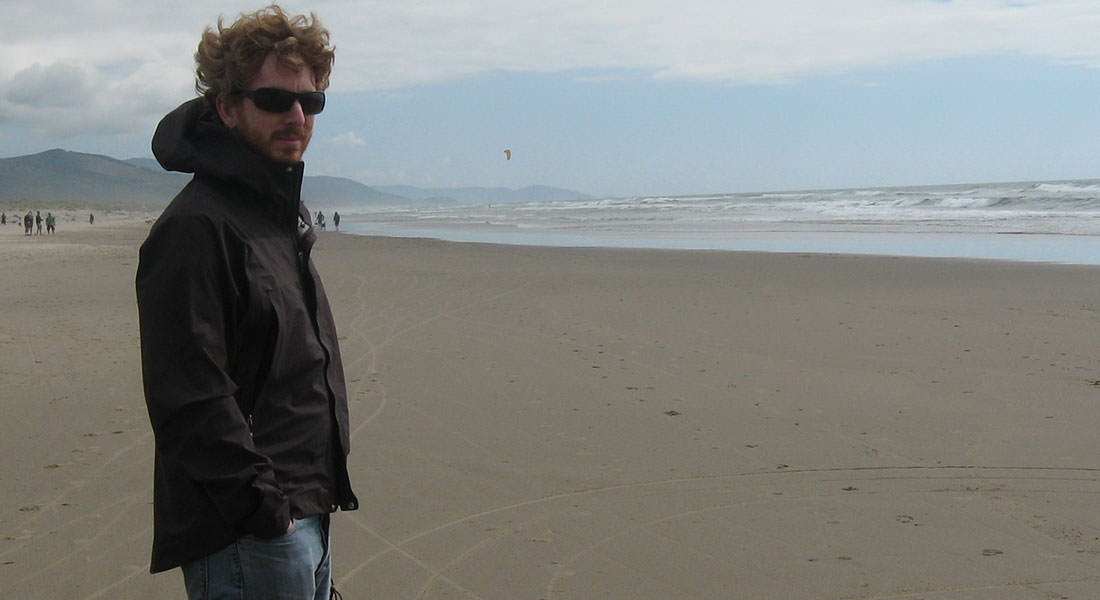
Many years ago, I bought a Nau Shelter Jacket (seen above from about 6 1/2 years ago, and here’s an old review). When I bought the jacket, I knew that the brand was focused on combining sustainability and performance, and it was on sale so it wasn’t that expensive. It fit great and performed well in any number of Oregon weather conditions. If trust is one of the foundations of love, then I started to love this jacket. I could rely on this jacket to look good and keep me dry. But something happened over time that surpassed the performance and fit. I had experiences in this jacket. It came with me on my 10 year anniversary to the Oregon coast (seen above, and yes, this is what you wear at the Oregon coast in July). I wore it to the pumpkin patch with the kids in October. I walked the puppy in it all spring. We made big, sweeping turns in fresh snow on Mt. Hood together. And as I had experiences in this jacket, I began to associate my experiences with the brand. So now when I wear a Nau shirt (since purchasing the Shelter Jacket, I own a total of 3 Nau jackets and 3 shirts, and my wife owns several jackets and articles of clothing from them as well), all of my associations of my jacket experiences carries my brand impression over to other products. And the new experiences I have when wearing a shirt carry over to when I wear the jacket. (Note: this is NOT a paid endorsement for Nau… I buy the stuff just like everyone else!)
Kevin Roberts, the Executive Chairman at Saatchi & Saatchi, wrote a book called Lovemarks in 2004.
“Love is about action. It’s about creating a meaningful relationship. It’s a constant process of keeping in touch, working with consumers, understanding them, spending time with them.”
– Kevin Roberts, Lovemarks (p. 74)
Content strategy is one of the ways to create the relationships that Kevin is talking about. It’s a way to keep in touch and spend time with consumers. For me and my Nau jacket, I’ve created these stories myself over time. But what if we, as content creators, could share these authentic stories with people before they buy the jacket? Would knowing that I could wear the jacket snowboarding in the morning and out to a nice dinner at night convince me to buy it? Would a story about a summer trip to the Oregon coast convince me? I don’t know. Did it convince you?
Following the presentation, there were a series of questions and comments. Here are some of them, with responses.
Q: Can a “creation story” by the product designer be inspirational content?
A: Inspirational content can be created from any number of sources. If the product designer has a story about why they created a jacket based on their own needs, this can certainly be inspiration content that complements information about a product’s features and benefits. Some successful Kickstarter projects do this very well.
Q: Brands need to have a publisher mindset. (More of a statement than a question from the audience.)
A: Absolutely! This is a great point. Many of our clients see themselves less as marketers and more as publishers. This mindset is important from a content strategy perspective because it sets the expectations of creating an editorial calendar, making content creation resources available and a priority, and budgeting for not only the creation of content but for the continuous improvement of how to publish and distribute content.
Q: In what ways can a company promote and market content?
A: Social media drives a lot of traffic to inspirational content, so posting links to stories on Facebook and Twitter is important. The publishing schedule on social media should be part of your overall editorial publishing schedule. Highlighting this content on other social media platforms like Instagram is another way to put inspirational content in front of people where they already are instead of where you hope they’ll be. Another thing to keep in mind is that not everyone will be browsing the content-specific section of your site, so think of ways to integrate this inspiration content in other places. Integrating inspiration content on product pages in an e-Commerce channel is just one way to increase visibility of this content. Another place to integrate this content could be on category landing pages, like how Patagonia features ski and snowboard content on their Ski & Snowboard Clothing page.
Q: Do you have some examples of A/B testing to see what works?
A: We’ve done a combination of analytics reviews and A/B testing on several travel and tourism sites to see how people engage with different types of content. In one example, we tested several home page options – one that featured inspirational content and one that featured paths to information (restaurants, attractions, activities, etc.). We found the inspirational content version had higher engagement than the informational content, which also matched with editorial changes to the client’s content strategy. A colleague of mine told me how he had A/B tested e-Commerce conversion on product pages: one with just specs, features, and benefits; one with additional inspirational content. They found the product pages with inspirational content converted higher than the non-inspirational product pages. A/B testing is fairly easy to implement and track, so trying different things should be part of an overall content strategy to see what works and what doesn’t. You should never be afraid to try new things as long as you’re seeing how effective these changes are. Do more of the stuff that’s successful and learn from the stuff that isn’t working out.
Q: Are there reasons for putting blog content at a separate web address than a brand’s website?
A: There are a few things that could determine this. Sometimes it is because of the limitations of a content management system for a brand’s website in that it doesn’t have the ability for robust storytelling. With The North Face, there were fairly complex publishing goals around the serialized content of Expeditions and the data relationships between Expeditions, Activities, Athletes, and posts, that customizing a platform like WordPress facilitated the ability to do this. And while I’m not an SEO expert, I believe there are some benefits of referral links from one website to another. That being said, the more you can keep all the inspiration and information within one platform, the more you can do in creating dynamic data relationships, which in turns helps to create better context around content. It also directs potential consumers to one branded website address which has the benefit of containing both inspirational content and the ability to purchase products. There are positives and negatives to either solution; it becomes a matter of what an existing content management system is capable of, what your content strategy and marketing goals are, and what will be the most budget-aware way to get something launched so you can try things out and measure effectiveness. Just because you launch something one way doesn’t mean you can’t change it in the future. Continuous improvement!
Q: Are there good examples of brands integrating inspiration into the product pages?
A: This was a tough question. Nothing came to mind during my presentation, so I looked around a bit more. I think Poler does a good job of integrating inspiration/lifestyle photos in their product pages, like on this Napsack product page, though they have a wealth of longer form content that they’re not linking to. I looked at a number of outdoor brand websites and had a hard time finding product pages that contained inspirational content. The travel and tourism industry does a good job of combining inspiration and information, like what we’ve done with National Geographic on National Geographic Lodges. In that example, the product is the experience and the experience is the product; the “product” pages for each Lodge needs to support both the inspiration (why I should go here, what experiences I’ll have, etc.) and the information (amenities, location, etc.). If you know of good examples in the outdoor industry, please leave it in the comments. Thanks!
Q: Can reviews be used as inspiration content?
A: Sure, reviews can definitely provide inspirational content. We looked at a potential concept of using pull quotes from reviews on product pages (though it was never implemented). This same idea could be used in the travel and tourism space to integrate user stories into information pages.
If you have more questions on the presentation above, please feel free to leave them in the comments.
If you’re interested in checking out the slides from the presentation, it is available on SlideShare (and embedded below):
Leave a Reply